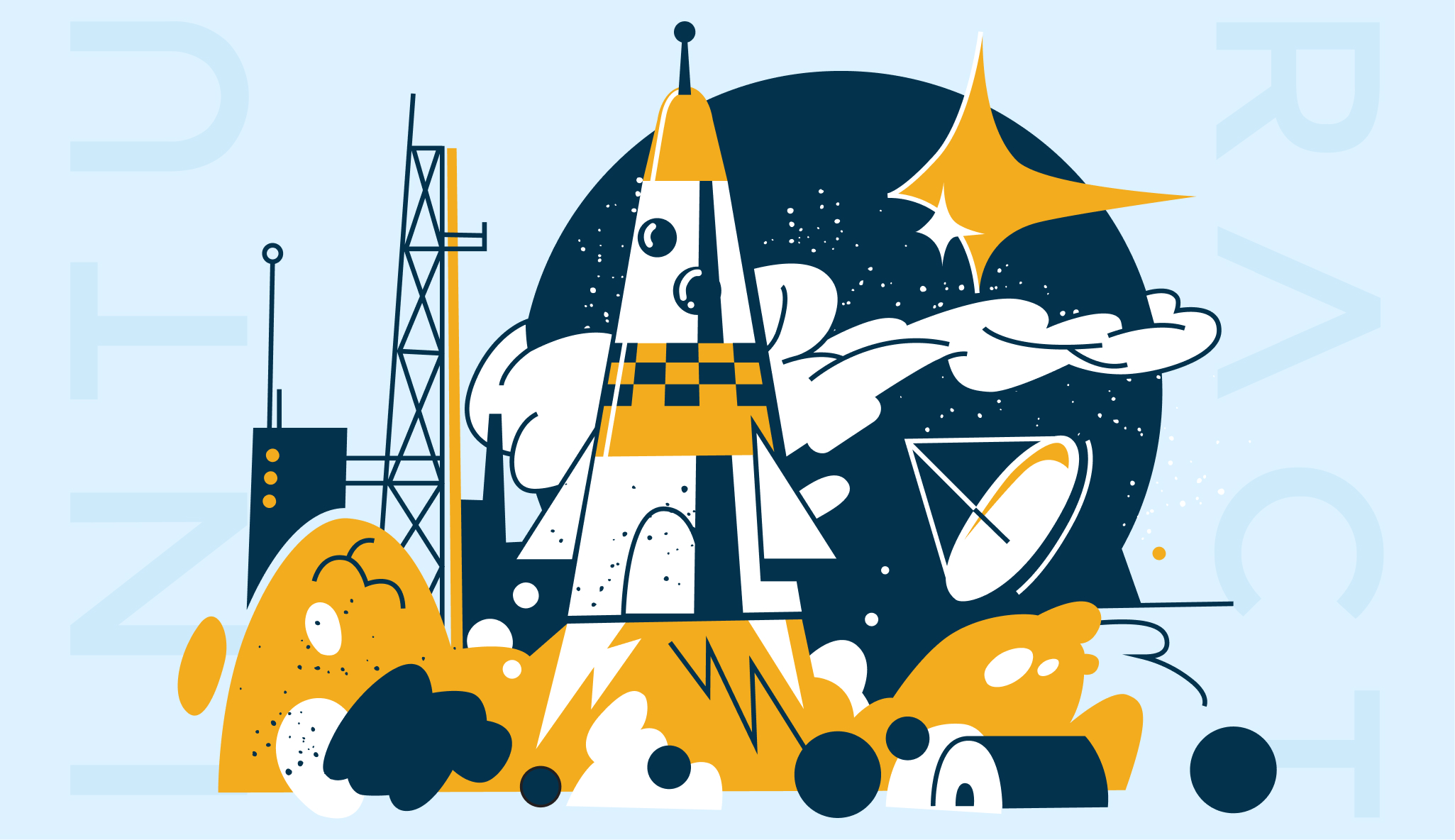
Thinking about Launching your first/next SaaS Product? Are you noting down all the features, benefits, and transformations of your SaaS product without actually looking at the DO’S and the DON'TS when it comes to your SaaS Product Launch Strategy?
If yes, then no need to stress much about it. In this post, we’ll share with you the reason behind the failed launch strategies and what you can do to avoid it.
Most product launches fail due to the lack of proper planning and execution.
After reading this blog, you’ll have a clear strategy that will set up your SaaS for success.
Let’s go.
Why Having a SaaS Product Launch Strategy Makes Or Breaks the Deal?
It doesn’t matter if you’re launching a new product or just a new feature. Your audience needs to be aware of every small change you make in your SaaS product in order to make a profit.
Having a product launch enables your audience to take part in the change and prepare themselves for any additional changes or updates in the product.
If you think, sending an email a day or two before, or announcing it on your Twitter handle will do the job, you’re wrong.
How Planning a SaaS Product Launch Helps
Having a Product Launch strategy in place can help you determine what tasks need to be done, the department that manages the work, and prepares your audience by keeping them in the loop with the latest updates, and news.
A product launch needs time, patience, and strategies to be successful. Planning your SaaS product launch in advance helps you fill any gaps left, and review everything so that it's fail-proof.
3 Stages Involved In a B2B SaaS Product Launch
The SaaS Product Launch stage is divided into three stages-
- The Pre-launch
- The Launch
- The Post-launch
Each part of the launch series has several steps inside that need to be completed before you move on to your next stage.
1. The SaaS Pre-launch Phase
The Pre-Launch phase is actually the most important part of the SaaS Product Launching Strategy. This is your foundation, and you need to set this strong. The motive of having a launch is to prepare your business and your customers for the launch and to create a buzz.
The Pre-Launch Stage includes-
- Preparing your website with the best User Experience and Copy-
Preparing for your Pre-Launch starts with your website. You can’t launch a product or even have a landing page in place if your website isn’t optimized to convert.
Update or write your website copy keeping these things in mind-
- Your Brand Story
- Your USP(Unique Selling Proposition)
- Explaining the benefits of your product
- Building credibility with blogs, testimonials, and featured logos.
Your Website design also plays a huge role in maintaining the best user experience. So, it’s always a good bet to keep your design simple, clean, and easily navigable or hire a designer.
- Understanding your competitive advantage-
Keeping your friends close and enemies closer is not something you use just in your personal life. When it comes to business, it's more or less the same in a way that you need to keep an eye on your competitors.
Understand what they’re doing right, and what are the gaps you can fill. Ask your customers for feedback. Asking them what they liked about the product, what they found could be improved or added, and what they like about your SaaS can help you get a clear idea of how to outrank your competitors.
- Set KPIs and goals-
To keep a track of all the metrics, you need to set SMART goals. Launching a B2B SaaS product is all about managing and analyzing the KPIs. Here’s a list of all the important KPIs and metrics you need to keep track of-
- Visitor to Sign Up rate
- Sign up to PQL rat
- PQL to customer rate
- Sign up to customer rate
These KPIs will help you analyze and evaluate what’s working and what’s not working for you.
- Building your Buyer Personas-
As a SaaS brand, you don’t have a buyer persona, rather have buyer persona(s). The reason is that, as a B2B SaaS Brand, your buyer might be the CEO of another business, but the one taking your product to the CEO will be a respective department.
Suppose, your SaaS product is about managing CRMs, then you’ll have to target both the Marketing department and the Founders of the brand(the one with the $$ bills).
- Finding the Right Lead Generation Channels-
If you’re a startup with a small team, then spreading yourself thin by being on every single social media platform won't help much. Try focusing on 2 platforms for your entire launch strategy.
Decide 2 platforms from where you'll be generating leads from and start creating content to get visible. Share blogs, industry reports, go live, etc basically do everything you can to get visible. Additionally, you can think about how to build a community online to generate leads, and then take them to your landing page. Don't forget the importance of outbound lead generation as well; reaching out directly to potential customers via cold email or cold calling can be highly effective in driving early traction and engagement.
- Offer a Free Trial and get feedback-
A free trial is the best way to test your SaaS product before officially launching it. Giving away 30 days of free trial makes it a win-win for both you and your customers. How so?
When you offer a free trial, you give yourself a chance to see what your customers are liking the most, and what they’d like to change. Doing this will ensure that once this product gets launched, it’ll be the best in the market. Plus, it’ll also fetch you case studies, and testimonials both important to convert leads into sales.
And the rate of people opting in for a free trial will be huge, so you’ll get in front of a larger audience who might also decide to go for a subscription after use.
- Work on your Email Marketing Campaigns-
There's a reason why 87% of B2B marketers say email is one of their top free organic distribution channels and that is the fact that they’re the best way to nurture warm leads and turn them into hot leads ready to buy from you.
Don’t underestimate the power of emails, you should take full advantage of it by paying special attention to details such as email signature marketing. As your email list grows, the number of eyes on every single email message will also increase, and the importance of those small tweaks will grow exponentially. Plus, that signature is a part of every single of your emails, and it matters more than it first seems.
So, you should always be prepared for all your email campaigns by creating and automating them beforehand. There shouldn’t be a gap between the lead magnet's arrival to the product demo trail email.
Ensuring this will also give your target audience a taste of buying from you.
- Choosing the right tools-
To automate systems and processes you need the right tools for your business. Investing in the right tools will give you the ROI by making your launch effective and seamless.
You need to have tools for these types of tasks-
- CRM (Customer Relationship Management)
- SEO (Search Engine Optimization)
- Online Advertising like Google Ads
- Social Media Marketing
- Lead Generation
- Email Marketing
- Project Management
- Time Efficiency
As a B2B Brand, there are many other types of tools you might need as you scale but these are necessary for your lunch. If you want to know which one will work the best for your business and budget, check out this blog by HubSpot here.
- Create a pre-launch landing page-
All your Marketing and Lead Generation efforts come down to your Landing Page. If you’re offering a free trial or a freemium, then you should have an optimized landing page with the copy and the design.
Both the Copy and the Design on your landing page will decide your conversion rate, so don’t hesitate in outsourcing it. Your Landing Page should have a clear design and your USP written on top. This will ensure that the right type of people opts for your product.
Now, you’re officially done with preparing for your SaaS Product Pre-launch phase.
2. The SaaS Launch Phase
Now comes the time to officially launch your SaaS Product. After all the preparation you’ve just done, it's time to work on getting your product out in the world.
In the SaaS Launch phase, you’ll be building your go-to-market plan or GTM plan. This includes-
- Choosing your Marketing Method-
There are many options available in the marketing space for you to decide where you want to launch and promote your SaaS product. Here are some options for you to choose from-
- Product Hunt
- BetaList
- AlternativeTo
- Startup Stash
- Hacker News
- AppSumo
- Startup Base
Choose any one of these platforms or explore more to find what works for your SaaS Product Launch Strategy.
- Onboarding all the Customers-
Remember, you did so much to promote your SaaS in the pre-launch, now it's time to onboard all the new customers.
To make this process simpler, and easy for your users, send them welcome emails, and easy signup forms.
- Giving your Customers a demo on how to use your product-
You should also walk your customers through a product demo. A Product Demo is nothing but a walkthrough of your SaaS works and how they can use it efficiently.
- Send them tutorials, and guides-
You should send your customers tutorials, guides, how-tos, and industry reports so that they stay on top of the trend and be able to utilize all the features your SaaS has to offer.
Tutorials and product guides will help them use all the features and benefits your SaaS product offers so that they can make the best use of it.
- Working on your Content Marketing Strategy and SEO-
By the time your acquired customers are using your product, work on gaining new leads. You can do this by working on your Content Marketing Strategy and SEO.
Also, adding Google scraping to the mix can help you to target the right audience and gain visibility on the Google search engine. This will not only help you build authority and credibility in the online space but also enhance your brand.
You can create a Content Marketing Strategy for blogs and video marketing, and with the help of SEO, you can start building more authority and credibility in the online space, enhancing your brand.
This will boost your organic marketing efforts and prove a consistent flow of leads in the long term with the potential to rank higher on Google.
- Taking the help of Ads-
As organic marketing takes time to show results you can also get more leads by Paid Advertising. This means using Google Ads, YouTube Ads, and Facebook Ads to gain more eyeballs and traffic to your landing page.
This will depend on your budget and how your Ads convert.
- Check your Activation Point KPI to measure progress -
You need to keep track of all the strategies you’re implementing and the results they’re bringing by keeping in mind the Activation Point KPI.
Activation Point is the rate at which acquired customers take part in your SaaS activation event to become active customers.
3. The SaaS Post-launch Phase
Your work’s not complete after the SaaS Product Launch. To give your customers a stellar customer experience and to make them keep coming back for more. You need to take the following steps-
-
Gather feedback-
The main motive behind a free trial was to get feedback. So do it.
You can get user feedback with the help of forms, surveys, quizzes, or just straight up asking them what they liked about your SaaS and what they’d like you to improve.
-
Send videos and Newsletters on how to make the best use o your SaaS-
Keep your Email Marketing game up and send weekly or bi-weekly newsletters to your customers making them aware of updates. You can also send in videos, blogs, and guides to help them.
-
Improve Customer Retention Rate by improving customer service-
Last but not least, improve your Customer Service. The way you treat your customers will define the deputy of your business or any business for that matter. So make sure their queries and complaints are solved quickly, preferably within 24 hours.
Doing this will increase your customer retention rates and make them raving fans and advocates of your SaaS.
What’s Next for Your SaaS Product Launches?
Hope this blog cleared away all your doubts regarding SaaS Product Launch Strategies. Now you’ll be able to launch your SaaS without looking back.
A preferred way to optimize your SaaS product related efforts is to go for a SaaS growth agency that will help you achieve scalable B2B SaaS growth with a data-driven and product-led approach



